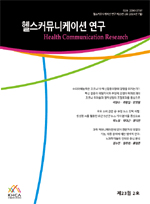언론은 우유 가격을 어떻게 바라보는가: 우유 가격 관련 기사 프레임 분석을 중심으로
How the media views milk prices: A frame analysis of News coverage on the milk price
- 한국헬스커뮤니케이션학회
- 헬스커뮤니케이션연구
- 제23권 3호
-
2024.1231 - 57 (27 pages)
-
DOI : 10.24172/hcr.2024.23.3.31
- 48

우유는 그 자체로도 영양가 높은 식품이지만 빵이나 아이스크림, 과자류와 같은 또 다른 식품의 재료이기도 하며, 버터, 생크림, 치즈 등 현대인이 더욱 자주 섭취하고 있는 다양한 형태의 가공식품으로 커피나 빵과 어울리는 음식으로도 많이 소비되고 있다. 이처럼 우유가 국민 먹거리의 많은 부분을 차지하고 있어 정부는 물론 식품업계와 시민들은 우유 가격에 민감한 편이기 때문에 이를 전하는 언론의 태도 또한 관심의 대상이 될 수밖에 없다. 따라서 본 연구는 우유 가격의 인상을 다루는 언론의 시각이 어떠한지 10년 이상의 기간 동안 ‘우유 가격’이라는 주제는 언론을 통해 어떻게 다루어졌는지, ‘우유 가격’을 바라보는 사회적 시각은 어떻게 구성되어 왔는지 뉴스 프레임 분석을 통해 분석하고자 하였다. 그 결과 우유 가격 관련 기사의 정보원은 우유업계와 정부 부처 위주이며, 단일 정보원 활용이 많고, 기사의 논조는 부정 논조가 더 높은 비중을 차지하는 것으로 확인되었다. 아울러 우유 가격 인상이나 동결을 다루는 내용 프레임이 매우 제한적이고 단순한 양상을 보이는 것으로 나타났다. 이러한 점에서 우리 사회에서 우유를 바라보는 다양한 시각과 활발한 논의의 필요성이 제기된다.
Milk is a nutritious food in itself, but it also serves as an ingredient in other foods such as bread, ice cream, and snacks, as well as in processed products like butter, cream, and cheese, which are more frequently consumed in modern diets. Additionally, it is commonly consumed with foods like coffee and bread. Given that milk is a significant part of the nation’s food consumption, both the government, the food industry, and citizens are sensitive to milk prices, making the media's approach to reporting on milk prices an important subject of interest. Therefore, this study aims to analyze how the media has framed the issue of milk price increases over a period of more than 10 years, focusing on how the topic of “milk prices” has been addressed in the media and how the social perspective on milk prices has been constructed through news frames. The findings show that the sources of information for milk price-related articles mainly come from the dairy industry and government departments, with many articles relying on a single source. Additionally, the tone of the articles tends to be predominantly negative. Moreover, the frames used to cover milk price increases or freezes are very limited and simplistic. These findings highlight the need for a broader perspective and more active discussions on how milk is viewed in society.
(0)
(0)